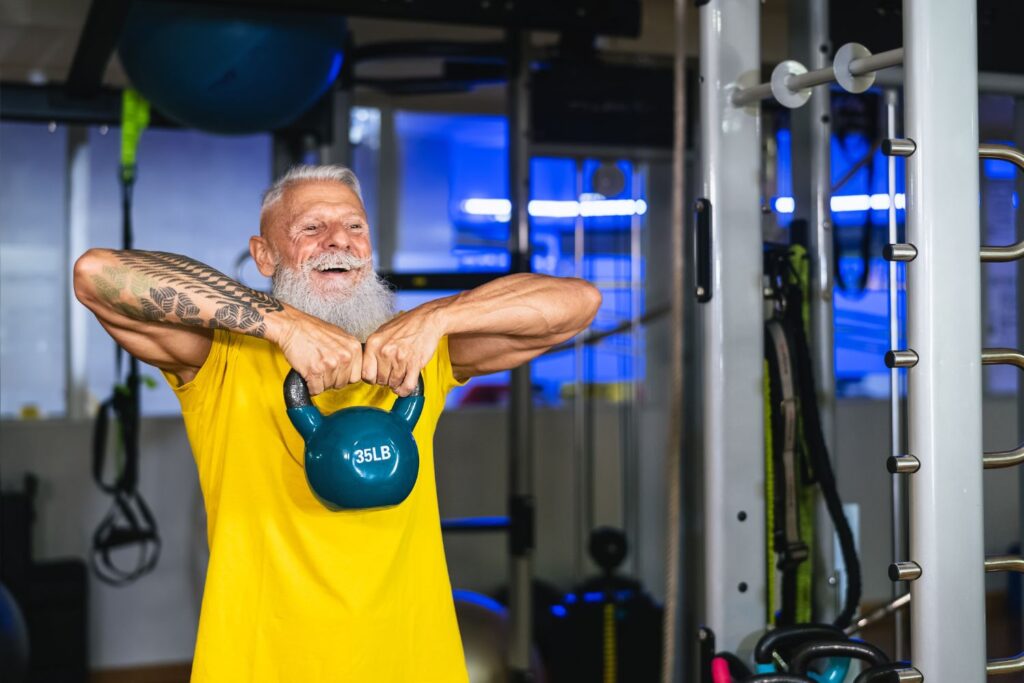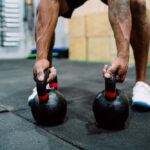Aging comes with its own set of challenges, but it doesn’t mean you have to slow down. Staying active is crucial, and kettlebell exercises are a fantastic way for seniors to maintain strength, flexibility, and overall fitness. But why kettlebells? These compact, versatile weights might look simple, but they pack a punch when it comes to delivering a full-body workout. Whether you’re new to kettlebells or just looking for ways to spice up your routine, this guide will walk you through everything you need to know to start reaping the benefits.
Benefits of kettlebell exercises for seniors
As we age, our muscle mass naturally decreases—a condition known as sarcopenia. This loss of muscle can lead to a decline in strength, balance, and mobility, increasing the risk of falls and injuries. Strength training with kettlebells helps combat these effects by building and maintaining muscle mass. Not only does this improve your physical capabilities, but it also boosts your metabolism, helping you manage your weight and energy levels.
Why kettlebells are a game-changer
So, why choose kettlebells over traditional dumbbells or other forms of weight training? The design of a kettlebell—with its handle and off-center weight distribution—requires more muscle engagement, especially in your core, to control the movement. This means you’re not just targeting one muscle group but working multiple muscles simultaneously. For seniors, this can translate to more efficient workouts that improve strength, stability, and coordination all at once.
Improving balance and coordination
One of the standout benefits of kettlebell exercises is their ability to improve balance and coordination. Since many kettlebell movements are dynamic, they require you to stabilize your body, engage your core, and coordinate your movements. This is particularly beneficial for seniors, as better balance and coordination can significantly reduce the risk of falls, which are a common concern as we age.
Enhancing flexibility and mobility
Maintaining flexibility and mobility is crucial for seniors who want to stay active and independent. Kettlebell exercises often involve a full range of motion, which helps to stretch and strengthen muscles and joints. Movements like kettlebell swings and deadlifts are particularly effective in enhancing hip mobility, which is essential for daily activities like walking, bending, and lifting.
Getting started with kettlebells
When starting with kettlebells, it’s essential to choose the right weight to ensure you can perform the exercises safely and effectively. For most seniors, a kettlebell weighing between 5 to 15 pounds is a good starting point, but this can vary depending on your current strength and fitness level. The key is to start light and focus on mastering the form before progressing to heavier weights. Remember, it’s better to start too light and gradually increase than to start too heavy and risk injury.
Essential Kettlebell Exercises for Seniors
Let’s break it down into upper-body, lower-body, and full-body exercises.
Upper Body Exercises
- Kettlebell press: The kettlebell press is excellent for building shoulder strength and stability. Start by holding the kettlebell at shoulder height with your palm facing forward. Press the kettlebell overhead until your arm is fully extended, then slowly lower it back to the starting position. This movement targets your shoulders, triceps, and upper back, helping you maintain upper body strength, which is essential for everyday tasks like lifting groceries or reaching for items on high shelves.
- Kettlebell row: The kettlebell row focuses on your back muscles, particularly the lats and traps, while also engaging your biceps. To perform this exercise, hinge at your hips, keeping your back flat and core engaged. Hold the kettlebell in one hand, arm extended toward the floor. Pull the kettlebell towards your ribcage, keeping your elbow close to your body, then slowly lower it back down. This exercise improves your posture and helps with activities that require pulling strength, like opening heavy doors or carrying bags. It’s one of the most important kettlebell exercises for stronger back generally.
Lower Body Exercises
- Kettlebell deadlift: The kettlebell deadlift is a fantastic exercise for strengthening your lower back, glutes, and hamstrings. Start with your feet hip-width apart, kettlebell placed between them. Hinge at your hips, keeping your back straight, and grasp the kettlebell with both hands. Engage your core, then lift the kettlebell by straightening your hips and knees. Lower it back down with control. This movement is great for improving your posture and protecting your lower back, which is crucial for daily activities like picking things up off the floor.
- Kettlebell squat: The kettlebell squat is a functional exercise that targets your quads, hamstrings, glutes, and core. Hold the kettlebell close to your chest with both hands, elbows tucked in. Stand with your feet slightly wider than hip-width apart. Lower yourself into a squat by pushing your hips back and bending your knees, keeping your chest up and your back straight. Return to the starting position by pressing through your heels. Squats are essential for maintaining lower body strength, which is vital for activities like climbing stairs or getting up from a chair.
Full Body Exercises
- Kettlebell swing: The kettlebell swing is a dynamic exercise that works your entire body, with a strong focus on your hips, glutes, core, and shoulders. Start by standing with your feet shoulder-width apart, holding the kettlebell with both hands in front of you. Hinge at your hips and swing the kettlebell back between your legs, then drive your hips forward to swing the kettlebell up to chest level. Let the momentum bring it back down and repeat. The kettlebell swing is excellent for cardiovascular health, improving your power, and enhancing overall body coordination.
- Kettlebell carry: The kettlebell carry is a simple but effective exercise for building core stability, grip strength, and endurance. Hold a kettlebell in one hand by your side, with your shoulders back and core engaged. Walk forward with controlled steps, keeping your torso upright and balanced. Switch sides after a set distance or time. This exercise mimics real-life activities, like carrying groceries or bags, and strengthens your ability to maintain good posture and balance.
If you are a senior and want to stay active and healthy, make sure to get in touch with our personal trainers in Fayetteville.
Final thoughts
Kettlebell exercises offer a versatile, effective way for seniors to stay strong, mobile, and independent. Whether you’re looking to boost your strength, improve your balance, or maintain your flexibility, incorporating kettlebells into your routine can help you achieve these goals. The key is to start at your own pace, focus on proper form, and gradually build up your strength and endurance.
Remember, it’s never too late to start reaping the benefits of regular exercise. By committing to a kettlebell routine, you’re investing in your long-term health and quality of life. So, grab a kettlebell, and start moving towards a healthier, more active you. Your future self will thank you!





